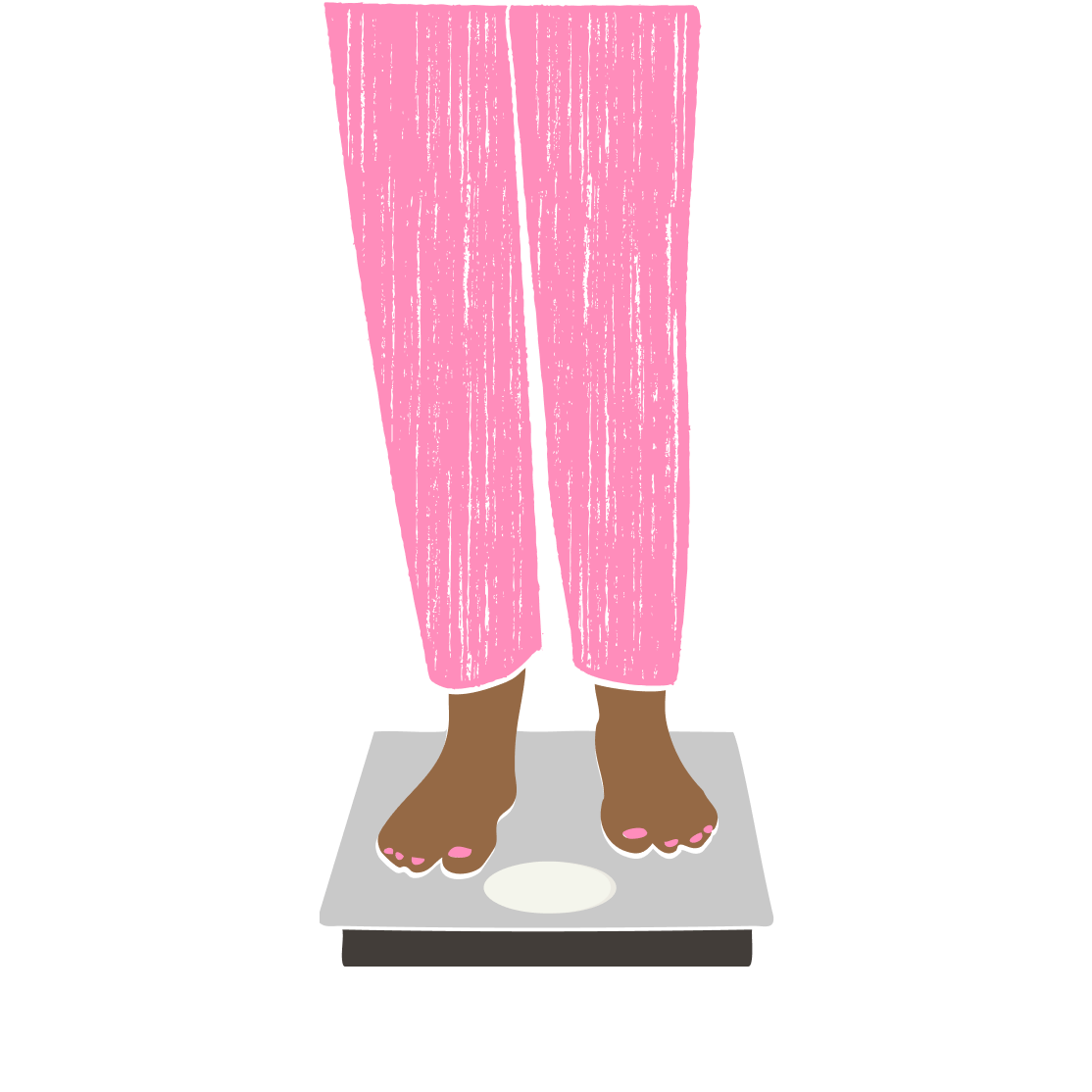Hormone replacement therapy (HRT) is one of the most effective ways to manage menopause symptoms caused by the decline in estrogen and progesterone. Available in pills, patches, and creams, the cost of HRT can range from $10 to over $500 per month, depending on factors like brand, dosage, and insurance coverage. At Midi, we help find the right treatment options for you, working with insurance to make relief accessible and affordable.
If you’re considering hormone replacement therapy (HRT), it’s easy to get swept up in all the benefits–fewer hot flashes and night sweats! better sex! no more brain fog! great sleep!—because it’s true: the right medications can be a gateway to feeling like yourself again during perimenopause, menopause, and beyond. And who doesn’t want that?
But then comes that next thought…sounds nice, but what’s it going to cost me? Fair question. And you’ve come to the right place to get answers. Here, find out everything you need to know about the most common forms of HRT, including how they work, why you should consider them, and, yes, what they could cost you.
How Much Does Hormone Replacement Therapy (HRT) Cost?
Pricing for hormone replacement therapy (HRT), like any other prescription medication you take, will vary depending on a few key factors:
- The form of HRT you’re taking (some methods are cheaper than others)
- Whether your meds are brand name or generic (the latter are always cheaper)
- If the meds are covered by your insurance (potentially more savings depending on your prescription drug coverage)
- Your dosage or treatment regimen
Hormone Replacement Therapy Options and Pricing
Hormone replacement therapy (HRT), sometimes referred to as menopausal hormone therapy or MHT, is a treatment for perimenopause and menopause that replenishes hormones, namely estrogen and progesterone, that naturally decline as we age. The name is a bit misleading—you’re not replacing any hormones in your body as much as you’re supplementing them as they decline. HRT is widely considered the most effective treatment for managing menopause symptoms that result from the rapidly fluctuating changes in estrogen and progesterone.

HRT works by releasing estrogen into the bloodstream or vaginal tissue, and is available in many forms, including pills, patches, vaginal rings, pellets, and topical creams and gels. To protect the uterus, clinicians add progesterone or progestin to estrogen, which reduces any risk of uterine cancer. For those without a uterus, progesterone may still be prescribed to help with sleep issues. For some, testosterone may be prescribed as well to help with dips in libido in addition to other symptoms.
Understanding the choices available to you can make the process of starting HRT feel less daunting and confusing. But remember: You’re not in this alone. One of the best things you can do on your menopause journey is team up with a healthcare professional, like a Midi Health clinician, to go over all your options and determine the best treatment for your lifestyle, medical history, symptoms—and budget. At Midi, we’ll work with you to choose treatments that will be affordable for you, depending on your insurance coverage.
A note on pricing: What you’ll see below will include a wide range of potential costs as the pricing from generic to brand name medications can vary greatly. While not all HRT meds are covered by insurance, many are. If you have prescription drug coverage, start by checking with member services at your plan to see which meds are covered and what your copay will be—in many cases, it could be considerably less.
Here, a primer to get you started understanding your HRT options and their costs:

Pills
What they are: Estrogen pills are an oral form of hormone replacement therapy. The two most commonly prescribed types are Estrace and Premarin (they also are available as creams). During perimenopause, you may want to consider a birth control pill to manage your symptoms and help prevent pregnancy which is still possible until you complete a full year without a menstrual cycle. HRT is not a contraceptive.
How they work: If you’ve ever taken oral birth control, the process will feel familiar since most regimens require you to pop a pill once a day (though you may be put on a different dosing schedule depending on your personalized treatment plan).
Why you should consider them: Estrogen pills can be an good alternative for those not interested in other forms of HRT, whether that’s due to preference, adverse reactions, or side effects. According to the most recent position statement from The Menopause Society, oral estrogen and progesterone therapy is just as effective as patches for alleviating hot flashes and night sweats. A few things to keep in mind: Estrogen pills are more likely than the patch to interfere with thyroid levels and increase the risk of clotting issues. They should generally be avoided in women with high cardiovascular risk factors, like heart disease.
Potential side effects: Abdominal pain, breast tenderness, back pain, headaches, increased blood pressure, and nausea.
What they cost: Anywhere from less than $10 for a 90-day pack of generic pills to $500 or more if you go brand name.
Patches
What they are: Hormone replacement patches, sometimes called estradiol patches, are adhesive patches applied to the skin. They’re one of the most commonly prescribed first-line therapies for many women beginning HRT for menopause, often because they have milder side effects than you might experience with HRT pills. The patches come in two forms: estrogen (estradiol) patches or combination patches that include both estrogen and progesterone (progestin).
How they work: The estradiol patch (e.g. Alora, Minivelle, Vivelle-Dot, Climara) is usually applied once or twice a week, depending on your treatment plan. The patch is placed on your lower abdomen on clean, dry skin. When it’s time to change your patch, move it to another spot in the same general area for best absorption. Some patches can be applied to the upper buttocks (check the package insert to see if this is true for the patch you’re using). But once you’ve chosen an area of the body to use for your patch—either the lower abdomen or the butt—stick with that area for consistent absorption.
Why you should consider them: Estrogen patches offer menopausal hormone therapy that bypasses the liver, and they have lower risks of clotting issues compared to pills, because they’re absorbed directly into the bloodstream. As a result, they’re often the preferred choice for women with cardiovascular risk factors, such as deep vein thrombosis (DVT) and a history of hypercholesterolemia, hypertension, or diabetes. Patches are also a good option if you start HRT after 60 to avoid the same risk factors as they increase with age. Another perk of patches: They’re effective at not just treating menopause symptoms, but can also help prevent osteoporosis — a key benefit because falling estrogen contributes to loss of bone density too.
Potential side effects: The side effects on patches tend to be milder than with other forms of HRT, but can include skin irritation, breast tenderness, vaginal discharge, and nausea.
What they cost: Pricing will vary by brand and dose, but can range from less than $40 for a month’s worth of patches with insurance to more than $250 without insurance.
Vaginal Estrogen Creams
What they are: Estrace and Premarin, which we cover above in pill form, are also available as vaginal creams.
How they work: Estrogen creams and suppositories are inserted into the vagina several times per week, and work similarly to vaginal rings, releasing estrogen locally to the vulva and vagina.
Why you should consider them: Prescription vaginal estrogen is considered the most effective option for relieving vaginal dryness and irritation and has been shown to eliminate symptoms of vaginal atrophy in 80 to 90 percent of cases. Unlike vaginal moisturizers and lubricants, which temporarily ease irritation, vaginal estrogen gets to the root of the problem by directly supplying parched vaginal tissues with estrogen.
Potential side effects: Vaginal discharge, irregular bleeding, yeast infections, and breast tenderness.
What it costs: $25 - $100 per month, depending on brand. Some insurers may cover them completely.
Vaginal Rings
What they are: Vaginal rings are inserted into the upper part of the vagina in order to deliver hormones locally to the vulva and vagina. Your doctor may prescribe a lower dose vaginal ring (Estring), which is a local estrogen therapy used after menopause to treat moderate to severe menopausal changes in and around the vagina. Another type, with a higher dose (Femring), uses systematic estradiol for vasomotor symptoms, like hot flashes.
How they work: Because of their placement, rings are an ideal method to slowly release hormones locally to the vagina. They’re usually replaced every 90 days, but dosing schedules can vary.
Why you should consider them: Lower dose vaginal rings can provide more targeted relief if you’re focused on treating vaginal dryness or irritation, while higher doses can have the added benefit of helping ease hot flashes and night sweats.
Potential side effects: Headaches, spotting, bloating, back pain, and urinary tract infections (UTIs).
What they cost: Out of pocket, this could run you about $500 or more, per ring. With insurance, the price can drop to less than $30, depending on the brand but your insurer may require you to try other regimens first before covering.
Vaginal Suppositories
What they are: Vaginal tablets (Vagifem) or suppositories (Imvexxy) operate in much the same way as vaginal rings in that they are inserted into the vagina in order to deliver hormones locally.
How they work: Once placed in the vagina, the tablets or suppositories slowly release hormones locally to that area. At first, you may be directed to insert a tablet daily and then spread out doses over time to only once or twice per week. Your dosing schedule will be dependent on your symptoms.
Why you should consider them: Like rings, tablets can do wonders for vaginal symptoms of menopause, like dryness, irritation, or burning. Depending on your dose, you may also notice that they help with hot flashes and night sweats, too.
Potential side effects: Vaginal discharge, irregular bleeding, and yeast infections.
What they cost: Generics can be had for $40 or less per pack, while brand names (suppositories are not available in generic form) can run you more than $200 out of pocket.
Gels
What they are: There are several different types of topical gels (Divigel, Elestrin, Estrogel, Estroge) you may be prescribed. Each type is applied slightly differently—some are rubbed into the arm, while others are applied to the thigh.
How they work: Typically, these gels are applied once a day, and the estrogen is absorbed through the skin into the bloodstream, providing a steady release, much like with the patch.
Why you should consider them: Topical gels have been shown to be effective for treating hot flashes and night sweats. Estrogel, in particular, can also help with vaginal dryness and burning. Topical gels are a solid alternative for those who prefer not to take pills, have adverse reactions to patches, or experience side effects with either medication. Like patches, gels may also be safer than pills for women with cardiovascular risk factors, but aren’t as extensively studied.
Potential side effects: Vaginal discharge, irregular bleeding, yeast infections, headaches, and breast tenderness.
What they cost: Generic brands can run you less than $50 for a 30-day supply, while some varieties cost more than $200. Insurance may help cover the cost of gels or other topical estrogen if you’ve had an allergic reaction to the adhesive in the patch.
Pellets
What they are: Hormone pellets are small capsules—each roughly the size of a Tic Tac—that are implanted in the body, usually in the upper butt cheek or hip, by a healthcare professional every three to six months. Patients are often given a mix of estrogen and testosterone pellets.
How they work: The inserted hormones are released into your bloodstream—a more direct release than with other forms of HRT.
Why you should consider them: Some women find relief on pellets and point to improved sleep, better libido, and fewer hot flashes as the main reasons. But many doctors, including Midi clinicians, don’t recommend them largely due to a lack of evidence around their safety and efficacy. Another big caveat: Once pellets are inserted there isn’t an easy way to remove them. As a result, many patients are stuck with waiting three to six months for the pellets to stop working in order to get relief if they’re on too high a dose or have a bad reaction to them.
Potential side effects: If you’re taking testosterone pellets, a too-high dose could lead to acne or oily skin, increased facial or body hair, voice changes such as deepening of voice (which can be irreversible), and mood changes.
What they cost: Pellet treatments are not FDA-approved, and, as a result, aren’t covered by insurance. On average, they’ll run you about $1,500 annually.
Progesterone Pills, Patches, and Creams
What they are: Progesterone is a hormone often used in hormone replacement therapy alongside estrogen. The first-line recommendation is oral progesterone, but it can also be given as a patch or in a cream (though there’s less research on the efficacy of vaginal progesterone creams).
How they work: While estrogen is effective in alleviating these symptoms, it can also thicken the uterine lining (endometrial hyperplasia), which can increase the risk of uterine cancer. So adding progesterone to HRT for any patient with a uterus is key because it reduces this thickening and sends the risk for developing uterine cancer back to baseline. Depending on the form of progesterone you’re prescribed, you may take it daily with estrogen or only certain days of the month.
Why you should consider them: At Midi, if you’re prescribed estrogen as part of your HRT and have not had a hysterectomy, then we couple it with some form of progesterone to reduce any risk of uterine cancer. Some patients who have had a hysterectomy (and don’t need protection from uterine cancer) may still be counseled to include progesterone as it’s been shown to help with sleep and insomnia.
Potential side effects: In some instances, having a peanut allergy would mean you should avoid certain types of progesterone (progesterone capsules contain peanut oil). Other side effects can include bloating, breast tenderness, fatigue, irregular bleeding, diarrhea, and mood changes.
What they cost: Less than $20 for a 90-day supply, but can be more depending on brand and dosage.
Testosterone Creams and Gels
What they are: Testosterone creams and gels have been shown in research studies to help with decreases in libido and arousal, and many patients report improvement in other symptoms like brain fog, insomnia, muscle mass, and energy.
How they work: Just like dips in estrogen and progesterone that occur during the menopause transition, testosterone is yet another hormone on a downward slope. While testosterone is not FDA-approved for women, it's often prescribed as a compounded cream that is applied to the thigh. Some doctors may prescribe testosterone gels (Testim or Androgel) off-label at a much lower dosage than what is given to men.
Why you should consider them: If low libido is impacting your quality of life, testosterone may be a solution, particularly in post-menopausal women. Testosterone hormone treatment has also been reported to help with energy, muscle mass, concentration, and sleep, though the science is still evolving on why.
Potential side effects: Acne, increased facial hair, weight gain, and deepening of the voice.
What it costs: Testosterone is not covered by insurance and can range from $45 for a 30-day supply to $100+ for a 90-day supply out of pocket. Given that testosterone is a controlled substance, additional labs and follow-up visits may be required, which can add additional costs.
Midi’s Approach to Choosing the Best Hormone Replacement Therapy Treatment for You
At Midi, we know every woman’s menopause journey is unique. So her treatment should be too. Working with a healthcare professional is going to be key to finding the best treatment option for you. Once you start HRT, regular check-ups with your clinician can help ensure you’re getting effective relief.
Tune in as Midi’s chief medical officer, Mindy Goldman, MD, a practicing OB/GYN at the University of California, San Francisco (UCSF) for almost three decades, answers the most common HRT questions she gets from patients.
How HRT Helps Women Feel Better
Many women report drastic improvements in their symptoms once they start hormone replacement therapy.
Frequently Asked Questions about HRT and Costs
Is Hormone Replacement Therapy Covered By Private Insurance?
In most cases, yes, many FDA-approved forms of hormone replacement therapy are covered by insurance. Confirm with your provider.
Is Hormone Replacement Therapy Safe?
Yes, hormone replacement therapy is safe. Hormone replacement therapy came under fire after a 2002 Women’s Health Initiative (WHI) study linked taking estrogen plus progestin hormone replacement therapy to an increased risk of breast cancer and heart disease. Not surprisingly, women panicked and most doctors stopped prescribing HRT altogether. That was 20 years ago, and these days, we know much more about HRT. A large body of recent research shows that if women start hormone replacement therapy within 10 years of their last period, not only do they enjoy significant relief from menopausal symptoms but they also have a lower risk of heart disease and bone loss. HRT may also be connected to decreased risk of diabetes and weight gain.
Is Hormone Replacement Therapy Covered By Medicare and Medicaid?
Medicare Part D, which handles prescription drug coverage, can provide coverage for HRT meds. Some Medicare Part C plans include drug coverage too. But keep in mind: Each Medicare drug plan has its own list of covered meds, so you’ll need to confirm what forms and brands of HRT are covered by your plan.
Many state Medicaid programs cover HRT, but not all. Check your coverage to confirm.
Note that Midi is in-network with most PPO plans. If your plan is an HMO, Midi is not in-network and your visit will be self-pay. Midi Health and the Medical Groups are not enrolled with, and are not participating providers with, any federal or state healthcare programs (i.e., Medicare, Medicaid) for the provision of any health care services or supplies and, as such, we can not treat Medicare, Medicaid or Medi-Cal patients at this time even as self-pay patients.
How Can I Save on Hormone Replacement Therapy?
If the HRT meds you need aren’t covered by insurance or you don’t have insurance, there are still ways to save. Ask your pharmacy about paying the “cash price" (which is often discounted), and many pharmaceutical companies offer savings cards to help make their meds more affordable for patients paying out of pocket. GoodRx also offers coupons that can help.
What Are Alternatives to Hormone Replacement Therapy?
While HRT is the most effective treatment for managing menopause symptoms, it’s not your only option. “There are multiple evidence-based ways to treat menopause symptoms,” says Dr. Goldman. Other options to consider:
- Lifestyle choices: Physical activity—150 minutes a week—can be helpful for weight control, sleep, and hot flashes, as can diet changes. Better sleep strategies, mindfulness, cognitive behavioral therapy, and integrative therapies like acupuncture can also make a difference in menopausal symptoms.
- Supplements and botanicals: Several supplements have been studied for their effects on menopause symptoms, and the research is promising. Black cohosh, for example, may help decrease hot flashes; red clover has been found to positively impact your bone and cardiovascular health. For mood swings and anxiety, ashwagandha is a potential remedy both before and after menopause.
- Non-hormonal prescriptions: Low-dose SSRIs, blood pressure medications, anti-seizure medications, and overactive bladder meds can help treat specific symptoms. Weight-loss meds, like GLP-1s, can also help with midlife weight gain.
The Takeaway
- Hormone replacement therapy (HRT) offers a wide range of options, with costs ranging from $10/month to over $500, making it accessible for different budgets.
- A healthcare professional, such as a Midi clinician, can help determine if HRT is the right choice for you.
- Personalized HRT recommendations are based on your unique symptoms, lifestyle, and medical history.
- Taking the first step by consulting with a clinician ensures you find the most effective and affordable option for relief.
If you’re in perimenopause or menopause and want guidance from clinicians who specialize in women’s midlife health, book a virtual visit with Midi today.
Hormonal change is at the root of dozens of symptoms women experience in the years before and after their period stops.
Our trained menopause specialists can help you connect the dots to guide you towards safe, effective solutions.
Whether you need personalized guidance or a prescription routine to tackle symptoms—including brain fog, hot flashes, sleep trouble, mood swings, and weight gain—we’ve got you covered. Learn more here.
Midi’s mission is to revolutionize healthcare for women at midlife, wherever they live and whatever their health story. We believe that starts with education, to help all of us understand our always-changing bodies and health needs. Our core values guide everything we do, including standards that ensure the quality and trustworthiness of our content and editorial processes. We’re committed to providing information that is up-to-date, accurate, and relies on evidence-based research and peer-reviewed journals. For more details on our editorial process, see here.


 Marissa Fontanez, DNP, FNP, FAIHM, MSCP
Marissa Fontanez, DNP, FNP, FAIHM, MSCP


